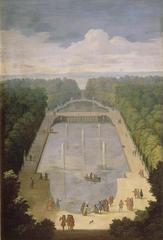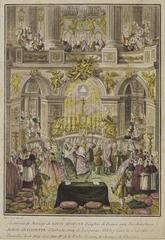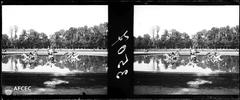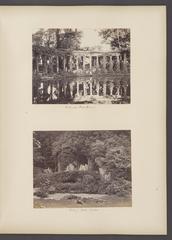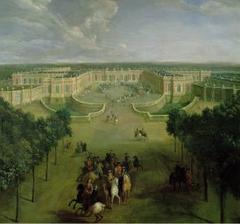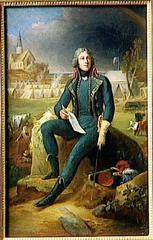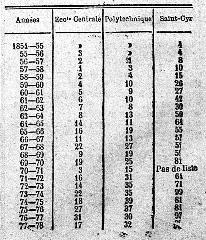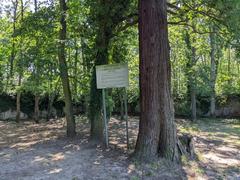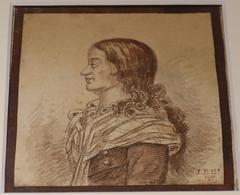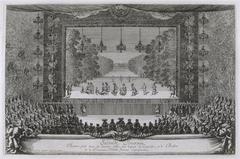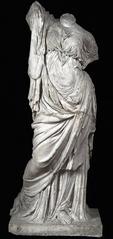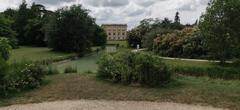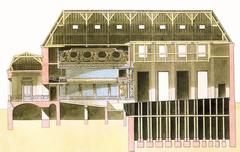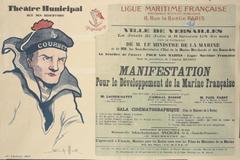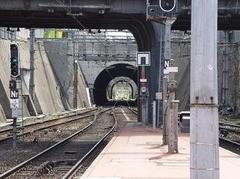Visiting Forêt Domaniale de Fausses-Reposes in Versailles: Hours, Tickets, and Travel Tips
Date: 18/07/2024
Introduction
Table of Contents
- Introduction
- From Hunting Grounds to Royal Retreat - The Early Years
- The Birth of a Forest - Louis XIV’s Vision
- More Than Just Aesthetics - The Practicality of a Planned Forest
- A Legacy of Leisure - From Royal Hunts to Public Recreation
- Visitor Information - Tickets, Hours, and Accessibility
- Travel Tips and Nearby Attractions
- Special Events and Guided Tours
- Photographic Spots
- A Breath of Fresh Air - Fausses-Reposes in the 20th and 21st Centuries
- FAQs
- Conclusion
- References
From Hunting Grounds to Royal Retreat - The Early Years
The story of Fausses-Reposes begins long before its designation as a national forest. In the 17th century, under the reign of Louis XIII, the area was a patchwork of farmland and woodland, prized as a royal hunting ground. The king, an avid hunter, appreciated the abundance of game and the tranquility of the landscape.
It was Louis XIV, the Sun King, who truly shaped the destiny of Fausses-Reposes. Driven by his grand vision for Versailles, he sought to expand the royal domain and create a landscape that reflected his power and grandeur. He acquired the land surrounding the existing hunting grounds, merging them to form a vast wooded expanse.
The Birth of a Forest - Louis XIV’s Vision
Louis XIV’s ambition extended beyond mere land acquisition. He envisioned a forest meticulously designed and managed, a testament to human ingenuity and control over nature. Under the guidance of André Le Nôtre, the renowned landscape architect who also designed the gardens of Versailles, the transformation began.
Thousands of trees, primarily oak, beech, and chestnut, were planted in precise patterns, creating a network of avenues and clearings. This grid-like structure, typical of French formal gardens, was a deliberate contrast to the perceived chaos of nature, showcasing the king’s ability to impose order on the wild.
More Than Just Aesthetics - The Practicality of a Planned Forest
The creation of Fausses-Reposes was not solely an aesthetic endeavor. The forest served practical purposes as well. The carefully selected tree species provided timber for construction and firewood for the palace and the growing town of Versailles. The forest also played a crucial role in regulating the water supply to the palace’s elaborate fountains, a testament to the interconnectedness of nature and human design.
A Legacy of Leisure - From Royal Hunts to Public Recreation
The forest became a stage for royal entertainment. Louis XIV, an enthusiastic hunter, organized elaborate hunts within its confines, using the network of avenues to strategically drive game. These hunts, attended by courtiers and foreign dignitaries, were grand spectacles, showcasing the king’s prowess and the splendor of his domain.
Following the French Revolution, the forest, once a symbol of royal privilege, was opened to the public. This marked a significant shift, transforming Fausses-Reposes from an exclusive royal domain to a shared space for recreation and leisure.
Visitor Information - Tickets, Hours, and Accessibility
Visiting Hours: The Forêt Domaniale de Fausses-Reposes is open daily from dawn to dusk.
Tickets: Entry to the forest is free of charge, making it an accessible destination for all.
Accessibility: The forest is accessible to visitors of all abilities. Paved paths and marked trails accommodate both walkers and cyclists. There are also picnic areas and benches throughout the forest for rest and relaxation.
Travel Tips and Nearby Attractions
Getting There: The forest is easily reachable by public transportation from Paris. Take the RER C line to Versailles-Chantiers station, then a short bus ride to the forest entrance.
Nearby Attractions: Besides the Palace of Versailles, visitors can explore the charming town of Versailles, the Grand Trianon, and the Petit Trianon. Each offers a unique glimpse into France’s royal past.
Special Events and Guided Tours
Throughout the year, the forest hosts several events, including guided nature walks, bird-watching tours, and educational workshops. Check the official website for a calendar of events and to book guided tours.
Photographic Spots
The forest is a paradise for photographers. Popular spots include the grand avenues lined with ancient trees, the serene ponds, and the picturesque clearings. These locations offer stunning backdrops for nature photography.
A Breath of Fresh Air - Fausses-Reposes in the 20th and 21st Centuries
Throughout the 20th century, the forest continued to evolve, adapting to the changing needs of the community. Paths were laid for walking and cycling, picnic areas were established, and the forest became a beloved destination for Parisians seeking respite from the city.
Today, Forêt Domaniale de Fausses-Reposes stands as a testament to the enduring legacy of human intervention in nature. It is a place where history and nature intertwine, offering visitors a glimpse into the past while providing a tranquil escape from the present.
FAQs
What are the visiting hours for Forêt Domaniale de Fausses-Reposes? The forest is open daily from dawn to dusk.
What activities can be done in Forêt Domaniale de Fausses-Reposes? Visitors can enjoy walking, cycling, picnicking, bird-watching, and guided tours.
Conclusion
The Forêt Domaniale de Fausses-Reposes is more than just a forest; it is a living museum of history and nature. Whether you’re a history buff, nature lover, or simply looking for a peaceful retreat, this forest offers something for everyone. Plan your visit today and walk through time in this enchanting woodland.
For more information and updates, download the Audiala mobile app, check out our other related posts, or follow us on social media.
